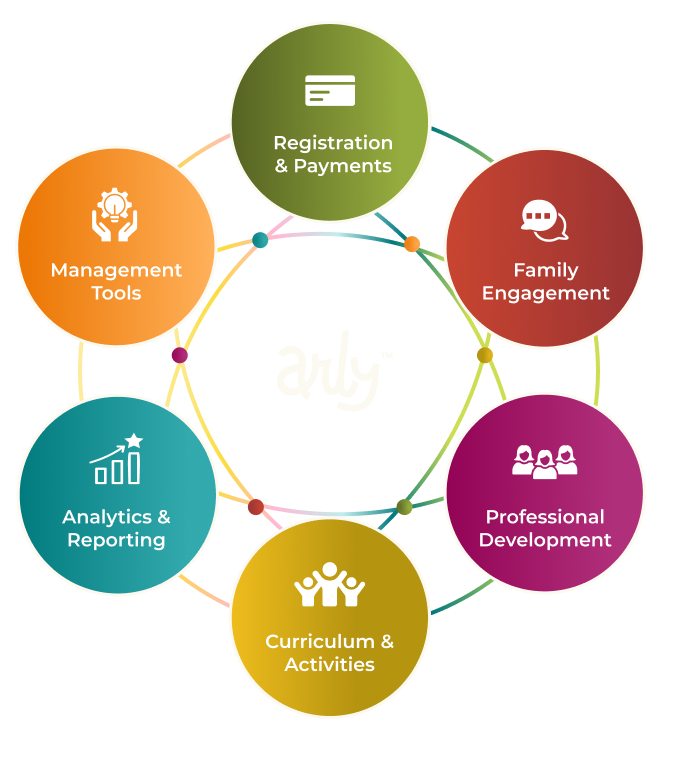Building Better Programs: 7 Steps to Designing a Quality Enrichment Program
By Arly Communications on April 18, 2022
Quality enrichment programs are a crucial piece of the youth experience. These programs help kids develop new skills and talents, explore new possibilities, and perhaps most importantly, dream a little bigger.
Fact: High-income households spend nearly seven times more than lower-income households on enrichment programs.
Result: Youth from high-income households are more likely to achieve large gains on test scores and be better prepared for college and careers.
Quality enrichment programs can also expand upon in-school learning. For instance, a trip to the zoo can give preschoolers firsthand experience with the animals they learn about in class. The difference is that enrichment activities are less formal, and children may not even realize they’re actively engaged in learning at all! These programs encourage kids to adopt a growth mindset and identify their own strengths free from the achievement-based feedback and judgment of grades, teachers, and formal assessments.
Leveraging 30 years of experience and evidence, Arly has empowered youth development programs - from schools and camps to YMCAs and beyond - to transform lives, anywhere, anytime, any way. Here are seven steps that we have found to help you design a quality enrichment program.
1. Define Quality Enrichment For Your Program
Urge yourself to step out of the everyday for kids. As you begin planning your program, determine the quality indicators that are most important - perhaps you are focused on alignment with the school day, ensuring your staff is prepared, or sustained participant attendance. Write it down and ensure your program is targeting those indicators standards at its core. Creativity will be your next step.
2. Shoot For The Stars: Imagine Ideal Outcomes For Your Students
As a preliminary step in the design process, imagine what the ideal enrichment plan looks like. You might have to come back down to earth after your enrichment imagination has run free.
Needless to say, once you have reeled it in, you’ll have an awesome list of inspiration for programs to come. From the list, you can choose which type of enrichment opportunities to offer in your program depending on a range of factors, such as:
- Age of your students
- Available resources
- Budget constraints
This vision should inform the rest of the design process. As you continue to brainstorm, ensure your ideas are targeted to overall program goals and quality indicators, which should inform the entire process of building the enrichment program.
3. Consider Common Enrichment Opportunities
The most popular enrichment opportunities succeed because kids love them and parents see results. Choose options that will:
- Be age-appropriate for your participants
- Prioritize fun and engagement
- Encourage active participation
- Fit your budget
- Include guidance from trained staff or experts in the field
- Overlap topics and skills. For example, a kid-developed podcast could build upon language arts and technological skills, while a full-length dramatic production might bolster art and executive function skills
- Integrate 21st century learning skills. Sports, for example, promote teamwork and conflict management, while creative writing and art foster patience and focus
4. Design A Program That Fits
A successful program fits your stakeholders, your budget, and your resources. A successful program doesn’t force you to stretch your budget. In fact, some of the best programs work so well that they may help you save money. Prioritize the most efficient, effective, and beloved programs. Ask these questions as you begin envisioning your ideal enrichment program.
Stakeholders
You’ve already considered your participants and their interests while envisioning the activities they might enjoy. Can you collect input by asking your participants directly what they want? Can you focus on families or caregivers seeking enrichment activities through a survey? Have you considered input from other stakeholders, such as staff, volunteers, and school personnel?
Budget
A successful program is dependent upon a well-built and managed budget. How can you effectively utilize your available funds? Do you have autonomy to allocate funds, or must you get consent from board members, a school district, or your parent organization? If your budget constraints limit your programming, are fundraising and sponsorships an option? Will there be additional money available for enhanced enrichment during any portion of the program?
Resources
How can your program best use the resources it has? Do the physical spaces you have access to meet programming requirements? Can you access equipment that will support your enrichment activities, such as supplies for sports or arts? What is your transportation plan for off-site programming?
5. Hire Good People And Make Them Great
Cultivate a strong team with the training, tools and resources in place to encourage professional development. Be sure to recruit strong enrichment staff and volunteers to fill in gaps or contribute unique programming.
Your enrichment team, staff, and volunteers are all the heart and soul of your program's success. Give them a program that builds their professional skills.
6. Set Up Your Program To Be Measurable From The Start – Grow From The Feedback
With a strong plan in place, it’s time to execute. To realize the best results, you must be prepared to adapt to feedback and make changes based on real-time outcomes. Consider using surveys and other formal feedback tools, check-in frequently and listen to what the kids and their families have to say, and keep tabs on your program's performance so that you can make real-time improvements and adjustments.
7. End on a high note with a showcase!
A showcase is a great way for kids to display what they've learned. A capstone project builds excitement and interest and can culminate in an event that draws the attention of parents, teachers, and the larger community. A showcase encourages sustained work toward a goal, planning, family and community involvement, a chance to build upon strengths, and the potential to grow your funding base.
Some great options include:
- Full-length plays
- Comedy shows
- Studio art or photography exhibits
- Musical concerts
- Talent shows
- Meals catered by students
- Mock Olympic Games
- Science fairs
- Radio shows
You can also plan an event that encompasses several options, such as a community talent show.
The Arly platform supports program administrators and staff at every step of the planning and execution process.






%20(71).png)

%20(69).png)
%20(89).png)
%20(52).png)